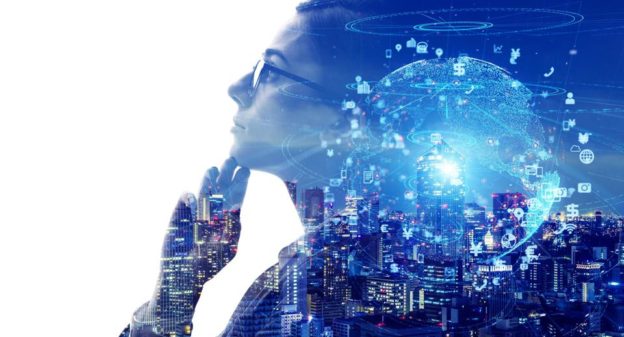There’s been concern about artificial intelligence taking away jobs for years, and with the recent boom in generative AI, those fears have grown. The ability to generate realistic and accurate text, images, or audio based on a prompt could make plenty of jobs obsolete (including, ahem, journalism and writing). But a new study says the doomsday predictions are misguided, because generative AI is far more likely to do just the opposite of canceling out jobs.
Last week, McKinsey published a report called The Economic Potential of Generative AI: The Next Productivity Frontier. It’s the result of a study involving 850 different job roles and 2,100 tasks across occupations in 47 countries. Researchers considered what portion of each existing job or task can be taken over by generative AI, as well as new occupations and responsibilities likely to be created by the technology. Their conclusion? Generative AI has the potential to create up to $4.4 trillion worth of annual value in the global economy.
$4.4 trillion is the high end of a range, with the lower bound sitting at $2.6 trillion. Even if the value created were to fall on the low end, it would still approximate the GDP of the United Kingdom, which was $3.1 trillion in 2021.
How will that happen? Mostly by automating and accelerating work that’s currently done by humans, allowing humans to do more work in the same amount of time. That makes both us and AIs sound like nothing more than workhorses, but here’s an example.
A study released in April detailed how generative AI impacted the work of customer service agents at a software firm. The AI monitored agent interactions with customers in real time and gave them suggestions for what to say. The agents who used the AI resolved 13.8 percent more issues per hour than they’d been able to without it; they got through calls more quickly, resolved more complaints successfully, and could even handle multiple calls at once. The AI also cut down the time managers had to spend training new employees, enabling them to take on bigger teams—and ultimately allowing the company to hire more employees and do more business.
McKinsey’s study found that generative AI and other technologies could automate work activities that currently take up 60 to 70 percent of employees’ time. That’s a complicated projection, though; the report acknowledges that some significant reskilling will be needed, and companies and governments will have to invest in supporting worker transitions and managing the other risks that such a momentous shift will bring. “If worker transitions and other risks can be managed, generative AI could contribute substantively to economic growth and support a more sustainable, inclusive world,” the authors wrote. It’s a pretty big “if,” one deserving several equivalent reports of its own to contemplate exactly how it’s all going to work.
According to the report, generative AI’s value add will be mostly concentrated in four categories of jobs: customer operations, marketing and sales, software engineering, and research and development. The customer service example above illustrates the first category; AI can assist with or completely take over customer interactions, and to some extent it’s already done so—when was the last time you got an actual human on the phone after calling a corporate customer service number?
For marketing and sales, AI can generate creative content (like the millions a day being generated by OpenAI’s DALL-E), including content that’s more personalized than what we see today. Software engineers are already using AI to write computer code based on natural-language prompts. In the research and development arena, AI is not only modeling proteins incredibly rapidly, it’s building protein complexes tailored to specific biological responses and helping design artificial protein drugs. It’s no surprise, then, that life sciences is one of the industries predicted to see the most revenue growth from generative AI (along with banking and high-tech).
It seems clear that generative AI is poised to revolutionize the way we work, and eventually even the way we live. But outside of generating economic value, will it generate well-being and a higher quality of life for the average person? Perhaps that’s the question we should really be focusing on.
AI will continue to proliferate and find new applications across various sectors of the economy. For now though, humans are still an essential piece of the equation to complete most tasks—including McKinsey’s generative AI report. While the data for it was retrieved and analyzed by AI, the report itself was written completely by humans.
https://fortune.com/2023/06/14/generative-ai-world-economy-use-cases-mckinsey-report/?utm_medium=DSMN8&utm_source=LinkedIn&utm_user=14419233730136865





